-
Product Name
PTCH1 Polyclonal Antibody
- Documents
-
Description
Polyclonal antibody to PTCH1
-
Tested applications
WB, IF
-
Species reactivity
Human, Mouse, Rat
-
Alternative names
PTCH1 antibody; BCNS antibody; HPE7 antibody; NBCCS antibody; PTC antibody; PTC1 antibody; PTCH antibody; PTCH11 antibody; patched 1 antibody
-
Isotype
Rabbit IgG
-
Preparation
Antigen: Recombinant fusion protein containing a sequence corresponding to amino acids 1214-1312 of human PTCH1 (NP_000255.2).
-
Clonality
Polyclonal
-
Formulation
PBS with 0.02% sodium azide, 50% glycerol, pH7.3.
-
Storage instructions
Store at -20℃. Avoid freeze / thaw cycles.
-
Applications
WB 1:500 - 1:1000
IF 1:50 - 1:200 -
Validations
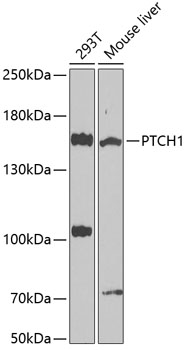
Western blot - PTCH1 Polyclonal Antibody
Western blot analysis of extracts of various cell lines, using PTCH1 antibody at 1:1000 dilution.Secondary antibody: HRP Goat Anti-Rabbit IgG (H+L) at 1:10000 dilution.Lysates/proteins: 25ug per lane.Blocking buffer: 3% nonfat dry milk in TBST.Detection: ECL Basic Kit .Exposure time: 90s.
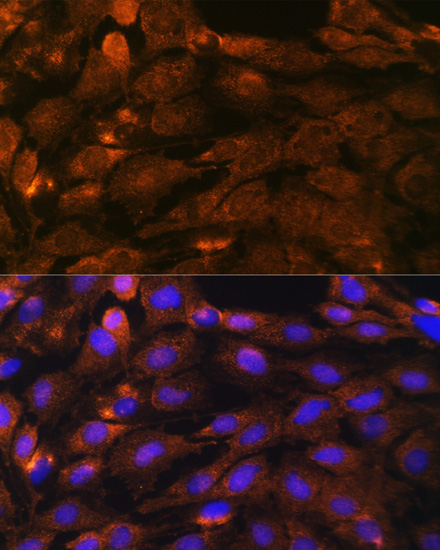
Immunofluorescence - PTCH1 Polyclonal Antibody
Immunofluorescence analysis of C6 cells using PTCH1 antibody at dilution of 1:100. Blue: DAPI for nuclear staining.
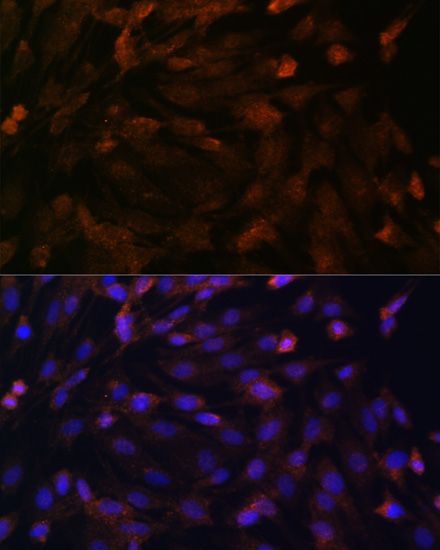
Immunofluorescence - PTCH1 Polyclonal Antibody
Immunofluorescence analysis of C6 cells using PTCH1 antibody at dilution of 1:100. Blue: DAPI for nuclear staining.
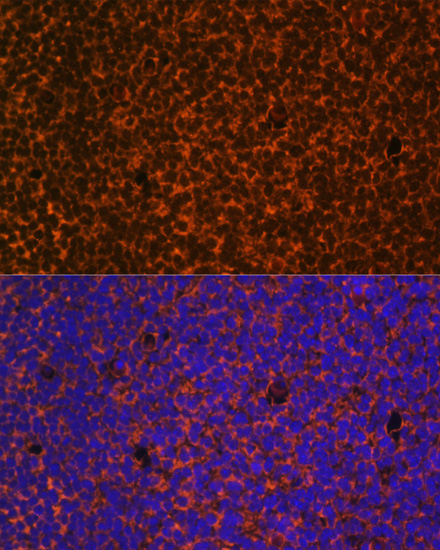
Immunofluorescence - PTCH1 Polyclonal Antibody
Immunofluorescence analysis of mouse embryos cells using PTCH1 antibody at dilution of 1:100. Blue: DAPI for nuclear staining.
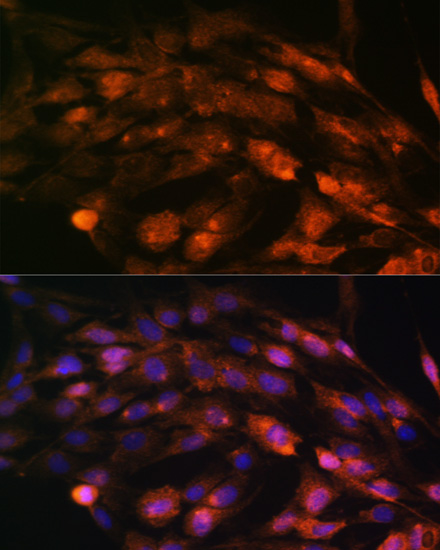
Immunofluorescence - PTCH1 Polyclonal Antibody
Immunofluorescence analysis of C6 cells using PTCH1 antibody at dilution of 1:100. Blue: DAPI for nuclear staining.
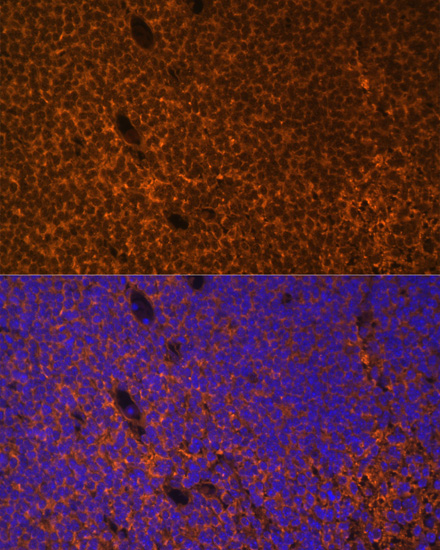
Immunofluorescence - PTCH1 Polyclonal Antibody
Immunofluorescence analysis of mouse embryos cells using PTCH1 antibody at dilution of 1:100. Blue: DAPI for nuclear staining.
-
Background
Acts as a receptor for sonic hedgehog (SHH), indian hedgehog (IHH) and desert hedgehog (DHH). Associates with the smoothened protein (SMO) to transduce the hedgehog's proteins signal. Seems to have a tumor suppressor function, as inactivation of this protein is probably a necessary, if not sufficient step for tumorigenesis.
Related Products / Services
Please note: All products are "FOR RESEARCH USE ONLY AND ARE NOT INTENDED FOR DIAGNOSTIC OR THERAPEUTIC USE"
